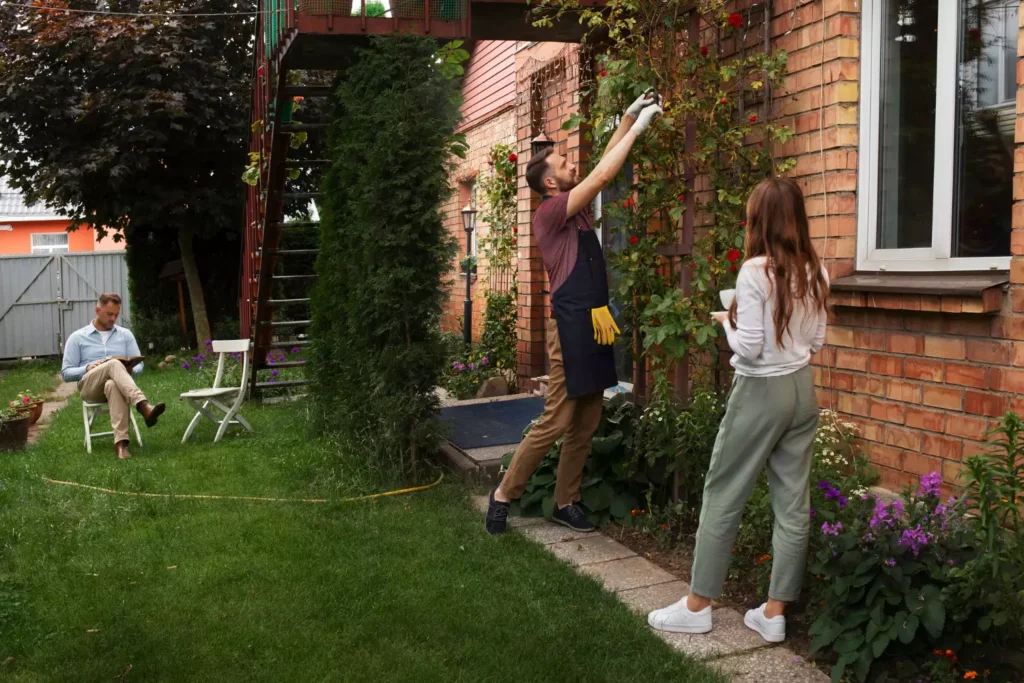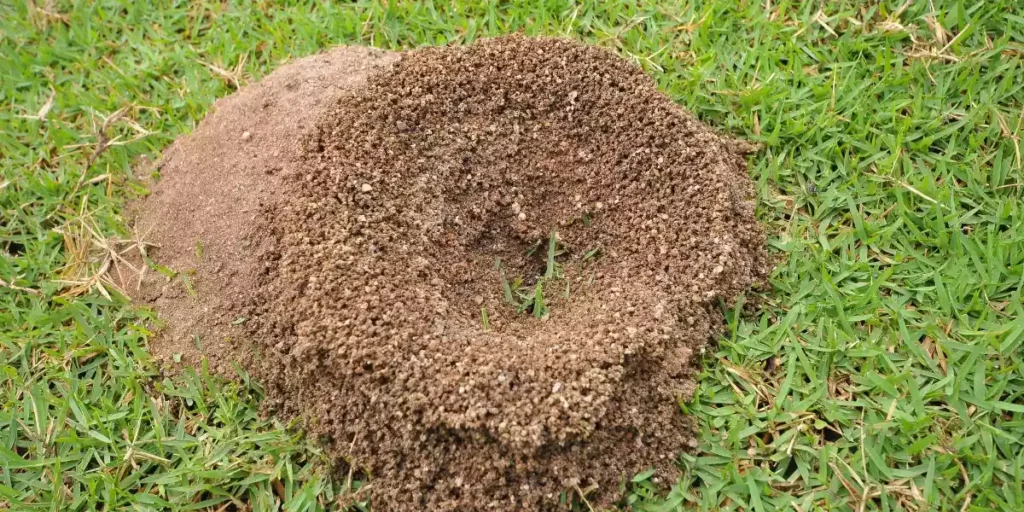Gardening tools are essential to every gardener, and one of the most versatile tools is a hoe. There are several types of hoes, including grubbing hoes and mattocks.
The differences between these two types of hoes can be confusing for gardeners, so it is important to understand what makes each unique. This article will explain the differences between a grubbing hoe and a mattock, so that gardeners can make an informed decision when selecting the right tool for their needs.
Grubbing hoes and mattocks are both designed to break up soil, but they differ in their construction and intended use. Grubbing hoes have long handles with broad blades that are used for heavy-duty tasks such as removing weeds or digging deep trenches.
Mattocks have shorter handles with narrower heads that are designed for clearing small areas of debris or tilling soil. Both tools can be used to turn over soil, but they have different shapes which makes them better suited for different tasks.
Understanding how these tools work and what their intended purposes are can help gardeners choose the right tool for their needs.
Overview Of Grubbing Hoes
A grubbing hoe is a multi-purpose gardening tool with a long handle and a heavy, sharp blade. The head of the hoe is typically made of metal or hard plastic and can be used for a variety of tasks.
It is especially useful for removing weeds from the soil, breaking up compacted soil, cutting roots, and digging furrows. It is also ideal for cultivating and aerating garden beds.
The blade material used in a grubbing hoe is usually carbon steel which provides great strength and durability. The blade design can vary depending on the manufacturer but typically has pointed edges that are angled at 45 degrees to cut through weeds with ease.
The grip design often consists of an ergonomic handle made from wood or plastic that provides comfort while using the tool.
Grubbing hoes are designed to be lightweight yet strong enough to tackle tough tasks in the garden such as breaking up dirt clods, tilling soil, weeding, and even creating seedbeds. They can also be used to remove small tree stumps, roots, and other vegetation too difficult to remove by hand.
Overview Of Mattocks
A mattock is a versatile tool which has been used for centuries. It is primarily made of metal and is used for digging and chopping in the earth, as well as for other tasks such as breaking apart roots and rocks. The design of the mattock has varied over time; however, it typically consists of a head with two blades at opposite angles to each other, attached to a long handle.
The history of the mattock dates back many centuries, and it was first used by farmers and gardeners throughout Europe. In modern times, it is still a popular tool among both professionals and enthusiasts who need to break through tough soils or chop through vegetation. The length of the handle can also be adjusted to fit the user’s height or leverage requirements.
Taking care of a mattock requires regular maintenance – cleaning off dirt, sharpening blades, and oiling the components – in order to keep it functioning properly. Additionally, different types of mattocks are available depending on the needs of the user: one-sided blades for digging or chopping harder soil/roots; narrow-bladed hoes for more precise cutting; sharp edges for edging beds or pathways; broad-headed hoes for cutting turf or thick vegetation; etc.
Regular maintenance ensures that your mattock will last you for years to come. Understanding how to use your tool correctly will not only increase its lifespan but also allow you to work more efficiently when tackling difficult gardening jobs.
As with any gardening tool, proper storage is key in maintaining its condition so that you can rely on your mattock when needed most!
Differences In Handle Length
The grubbing hoe and the mattock are two common tools used in gardening and landscaping. Both have different handle lengths, which impacts their weight balance and blade sharpness.
The grubbing hoe typically has a shorter handle than the mattock, with a length ranging from 28-32 inches. This short handle provides stability to the user, making it ideal for working in tight spaces with precision. The short handle also reduces the overall weight of the tool, allowing it to be easily maneuvered. As a result, its blade sharpness remains unaffected due to the light weight balance.
In contrast, mattocks generally have longer handles which range from 48-60 inches long. This increases the overall weight of the tool and makes it harder to maneuver in tight spaces; however it does provide more leverage when digging or cutting through tough soil and roots.
The longer handles also allow for greater power when swinging the tool at an object or ground surface; however this can increase blade wear due to its heavier weight balance.
Both tools are useful for different tasks, depending on what is needed for a particular job. Choosing between a grubbing hoe and a mattock should be based on understanding how each tool’s handle length affects its performance in terms of weight balance and blade sharpness.
Differences In Blade Shape
The biggest difference between a grubbing hoe and a mattock is the blade shape. Typically, grubbing hoes have a concave blade that is slightly curved and sharpened to an angle of about 60 degrees. This design allows for increased cutting power when chopping through roots and soil.
Mattocks, on the other hand, have a flat, rectangular blade that is angled at 90 degrees with a pointed tip on one end. This design provides greater leverage when digging deep trenches and loosening compacted soil.
The material used to make the blade also varies between these two tools. Grubbing hoes are typically made from tempered steel or stainless steel which gives them excellent durability and strength so they can be used in tough conditions without breaking or rusting easily. Mattocks usually use forged carbon steel which makes them hard-wearing but more prone to rusting if not cared for properly.
Both grubbing hoes and mattocks offer gardeners different ways of working in the soil, but they each have their own unique advantages depending on the task at hand. A well-equipped gardener should consider adding both of these tools to their collection so they can tackle any gardening job with ease.
Intended Uses For Grubbing Hoes
Grubbing hoes and mattocks are both tools used in gardening and landscaping, but they have different purposes.
A grubbing hoe is a short-handled tool with a narrow blade angled at the end that is useful for breaking up soil and removing weeds. It has a flat end for slicing through soil and a pointed edge for digging out weeds. The blade has an arc shape that allows it to move through the soil more easily than other tools.
A mattock is a long-handled tool with both an adze and pickaxe head on either side of its handle. It can be used for digging, chopping, cutting roots, or clearing underbrush or dense vegetation. Its sharp edges make it perfect for breaking through compacted soils or even rock. The adze side of the mattock is good for chopping up weeds; while the pickaxe side works well for digging deep into the soil to aerate it or break up hard chunks of dirt.
Both grubbing hoes and mattocks are great tools for gardeners and landscapers alike to use in order to maintain their properties.
Grubbing hoes are best suited for weed control as they can quickly cut through shallow rooted plants without much effort, while mattocks can be used to loosen tough soils, dig trenches or holes, chop roots and clear stubborn vegetation.
Both tools provide excellent options when it comes to working in your garden or landscape area; just be sure you select the right one according to your needs!
Intended Uses For Mattocks
A mattock is a versatile gardening tool that can be used for a wide range of tasks.
It has a long handle and a head consisting of two parts – one is like an adze and the other is like an axe.
The primary use of the mattock is to break up soil, cut roots and dig holes. It can also be used for weeding techniques, such as cutting through weeds’ roots, and for light trenching or edging.
The mattock’s shape makes it easier to work with than a grubbing hoe, which has only one blade.
Mattocks are best suited for preparing new beds and rough soil conditioning in large areas, since they are much more efficient than digging tools such as shovels or spades.
They can also be used to create trenches for planting bulbs or other plants that require deep planting depths.
Mattocks can also be used in place of rakes for breaking up clods of soil or leveling hard-packed soils after tilling, providing greater control over how deeply the blades penetrate the soil.
Additionally, they can be used to shape mounds or furrows and remove small stones from garden beds without damaging nearby plants.
This makes them ideal tools for creating attractive flower beds with smooth surface textures that will help retain moisture and reduce weed growth.
Choosing The Right Tool For Your Needs
While both a grubbing hoe and a mattock have their place in the garden, it is important to understand the differences between them when deciding which tool to use for any given task.
As it turns out, choosing the right tool for your needs can be determined by factors such as weeding techniques and soil type.
A grubbing hoe is primarily used to cut through roots and weeds, while a mattock is better suited for digging up tough soil, rocks, and other debris.
The blade of a grubbing hoe is thin and flat, making it ideal for slicing through small roots or weeds. Its long handle allows you to stand upright instead of bending over while working.
Mattocks are generally heavier than grubbing hoes and have broader blades that are better suited for digging into hard-packed soils or rocky terrain. They also usually have shorter handles so you can work with more power without having to bend over too much.
No matter which tool you choose, it’s important to remember that the success of your gardening project will depend on more than just the tools you use. Consider factors such as the size of your garden plot and how often you plan on using the tool before making a final decision.
With some thoughtfulness and care in selecting the right tools, you can ensure that your gardening endeavors are successful.
Conclusion
The grubbing hoe and the mattock are both essential tools for any gardener or landscaper. The differences between them are subtle but important.
The handle of the grubbing hoe is shorter than that of the mattock, making it suitable for more precise tasks. Its blade is also curved, which allows for a greater level of control when removing small weeds or roots from soil.
On the other hand, the mattock’s longer handle gives it more power and leverage to dig deeper into tough soil, while its flat blade makes it easier to break up clumps of dirt or chop through roots.
These tools can both be used to great effect in a variety of gardening and landscaping tasks – depending on which tool is best suited to the job at hand. Choosing the right tool will help you achieve better results while saving time and effort.
Whether you’re digging up weeds or breaking up soil, selecting either a grubbing hoe or a mattock can make all the difference when working in your garden or landscape project.




